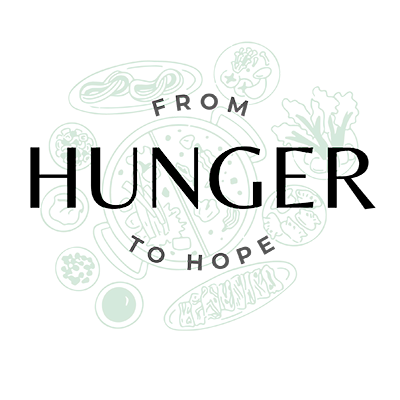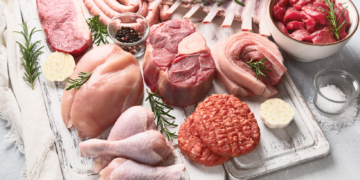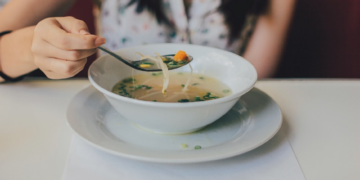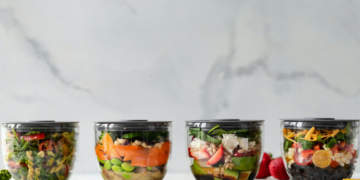Cooked shrimp can be a delicious and easy meal. If you have leftover cooked shrimp, however, it is important to know the proper food safety guidelines for storing and reheating leftovers. Following these guidelines will ensure your shrimp remains safe to eat and tastes just as good as when it was first cooked. This guide will explain what to do with leftover cooked shrimp so that you can enjoy it again the next day or later in the week.
Is it safe to eat leftover cooked shrimp
Leftover cooked shrimp can make a great addition to a meal. It is an easy and cost-effective way to quickly whip up a delicious dish. But with any food, there is the safety factor to consider. Is it safe to eat leftover cooked shrimp? Let’s explore this further and examine the potential risks associated with consuming this type of food.
What are the risks associated with eating cooked shrimp
Eating properly cooked shrimp is generally considered safe for most people. However, there are some risks associated with eating leftover cooked shrimp, as it can be a potential source of food poisoning.
When cooking and storing shrimp, it’s important to practice good food safety practices to ensure that the shrimp doesn’t become contaminated. According to the Canadian Food Inspection Agency (CFIA), you should use separate cutting boards for raw and cooked foods and always wash your hands before preparing food. It’s also recommended that cooked shrimp is consumed within two hours of cooking at room temperature or four days when stored in the fridge at a temperature of 4°C or less.
In addition, the CFIA recommends avoiding re-warming cooked foods more than once and consuming them cold instead whenever possible. They also recommend washing knives and any surface that comes into contact with raw or cooked food in warm soapy water after use to reduce the risk of cross contamination.
Although eating leftover cooked shrimp is generally safe, it is important to take note of these safety guidelines before consuming them. It is particularly important for vulnerable populations like pregnant women, young children and those with weakened immune systems due to medical conditions or advanced age as they are more likely to experience severe illness from foodborne bacteria if exposed.
How long can cooked shrimp be stored safely
Cooked shrimp can be stored in the refrigerator for up to three days. It is best to store cooked shrimp in an airtight container or zip-top bag to prevent bacteria from forming. After three days, it’s best to discard any remaining cooked shrimp as it will have developed a sour taste and lose its texture. To extend the shelf life of cooked shrimp, wrap it tightly in plastic wrap or place it in airtight containers and freeze for up to three months.
When reheating previously cooked shrimp, always smell the dish before consuming. If the shrimp smells off or has a sour taste, discard it immediately and do not consume. All food should reach an internal temperature of 165°F (74°C) before eating. To ensure that your reheated leftovers are safe to eat, use an instant-read thermometer when checking the internal temperature of the dish.
How to tell if cooked shrimp is still safe to eat
If you’re wondering if it is safe to eat leftover cooked shrimp, the answer may depend on certain factors such as the quality of the shrimp when it was cooked, how it was stored and how long ago it was cooked. Knowing these factors can help you make an informed decision about whether or not it is safe to eat cooked shrimp that has been left over. Let’s take a look at what these factors are.
Check the color and texture
Check the color and texture of the shrimp before deciding if it is safe to eat. Cooked shrimp will usually be pink with some translucence, and its texture will be firm yet tender. If the cooked shrimp appears grey or has a rubbery texture, it may be spoiled due to improper storage or deteriorating quality. Also check for a sour smell. If the cooked shrimp smells sour, it’s likely spoiled and should not be consumed.
If you aren’t sure whether cooked shrimp has gone bad, you can use other senses to make an educated decision about whether to eat it. Dispose of any cooked shrimp that has an off-putting odor or is slimy and discolored. Don’t hesitate to throw out food that looks or smells questionable – it’s better to be safe than sorry!
Smell the shrimp
When determining whether cooked shrimp is safe to eat, smell is the first indicator. It should smell like the ocean – slightly sweet and salty with a slight hint of fishiness. If it smells sour, sharp or different from when you cooked it, discard it. Do not taste the shrimp to test for safety; if spoiled, there could be harmful bacteria present that would make you ill if ingested.
Texture and color are also important factors in assessing shrimp’s safety for consumption. Undercooked shrimp have a grayish hue or an opaque color, while the cooked shrimp meat will be off-white in color and will look moist and slightly firm. Anyone handling raw or cooked seafood should practice proper food safety techniques such as wash their hands with warm water and soap before handling any food as well as during food preparation and after touching raw seafood.
Check the expiration date
To determine whether cooked shrimp is safe to eat, the most important factor to consider is the expiration date on the package. By checking the date and making sure it hasn’t passed, you can usually tell whether cooked shrimp is still fresh and safe to consume. If you aren’t sure about an expiration date, it’s best to discard the cooked shrimp.
In addition to checking the package expiration date, there are other signs that cooked shrimp has gone bad. Cooked shrimp should be stored in a cooler with ice packs or a refrigerator at 40°F or lower if not consumed within two hours of cooking. Cooked shrimp should also be kept refrigerated at this temperature until ready to serve or eat and disposed of within one day after cooking. If you notice any discoloration, sliminess or an off odor, then it may be best not to consume the leftover cooked shrimp.
Cooked shrimp can last up two days in the freezer when stored in an airtight container; however if they have been frozen more than once they should not be eaten. To ensure that your cooked shrimp has been stored properly follow these food safety guidelines: refrigerate within 2 hours after cooking and transfer refrigerated leftovers into shallow containers for quick cooling within one hour of being removed from refrigerator; discard any food that has been left out for longer than 2 hours after serving; fully cook fish/shellfish so internal temperatures reach 145°F (or follow local recipes); promptly dispose of any food that looks or smells bad; store all leftovers in sealed containers in fridge no more than 1-day prior to consumption; check label for best by dates give on perishable food packaging prior to consumption; and consider purchasing quality frozen product for longer storage life versus fresh product when possible
How to store cooked shrimp
Cooked shrimp can make for a delicious meal, but knowing the proper way to store and handle the shrimp is important for preserving its freshness. This article will discuss the best methods for storing cooked shrimp, as well as its shelf life and safety considerations. Read on to learn more about how to store cooked shrimp correctly.
Refrigerator storage
Cooked shrimp should be stored in the coldest part of the refrigerator and should be eaten or discarded within two days. To store cooked shrimp, place them in an airtight container or wrap in foil and place them on a shallow dish. Make sure that any liquid released from the shrimp is contained within the dish, as this reduces the risk of contamination from other food items in your refrigerator. When reheating, remember that cooked shrimp should reach a temperature of 165°F or higher.
When freezing cooked shrimp, wrap any unused portions tightly to minimize dehydration and flavor loss. Always check the packaging label for best before dates and use-by dates to ensure freshness. Cooked shrimp should always be frozen immediately after cooking and never thawed at room temperature. To reheat cooked shrimp, thaw them overnight in the refrigerator before heating. Cooked frozen shrimp can be leftovers up to six months when properly stored away from other foods in a sealed ice-proof container or bag that prevents moisture loss.
Freezer storage
Storing cooked shrimp in the freezer is a great way to maximize their shelf life and prevent spoilage. To safely store cooked shrimp, start by ensuring they are cold before transferring them to an airtight container. Properly labeled containers should be used that list both the date and type of food stored. Frozen cooked shrimp can last up to three months, but should be consumed before that timeframe. When reheating cooked frozen shrimp, use the same attention to safety as you do with other proteins: they must reach an internal temperature of 165°F prior to consuming.












